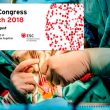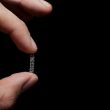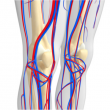Defining dual antiplatelet therapy (DAPT) seems a never-ending story. We go from trials showing the safety of shorter schemes thanks to new generation stents to others suggesting up to two years of DAPT. Rather than finding a general scheme, it seems to be about adjusting DAPT on a case by case basis, according to ischemia<a href="https://solaci.org/en/2018/09/06/antiaggregation-time-after-treating-bifurcations/" title="Read more" >...</a>
ESC 2018 | ART: Disappointment with Bilateral Internal-Thoracic Artery Grafts After a 10-Year Follow-Up
Published 5-year results had been neutral for bilateral vs. single internal-thoracic artery grafts, but, at the time, surgeons argued that the time period analyzed was not enough and that a difference would be observed after 10 years of follow-up, once the trial finished. Such follow-up was presented at the European Society of Cardiology (ESC) Congress 2018<a href="https://solaci.org/en/2018/08/30/esc-2018-art-disappointment-with-bilateral-internal-thoracic-artery-grafts-after-a-10-year-follow-up/" title="Read more" >...</a>
ESC 2018 | CULPRIT-SHOCK: 1-Year Results Continue to Support Treatment of the Culprit Artery Only
Increases in the rates of revascularization and heart failure do not justify the early mortality advantage shown by treatment of the culprit artery only in patients with acute myocardial infarction and cardiogenic shock. The 1-year follow-up of the CULPRIT-SHOCK trial reinforces the idea of only treating the culprit artery, with an option for revascularization of<a href="https://solaci.org/en/2018/08/28/esc-2018-culprit-shock-1-year-results-continue-to-support-treatment-of-the-culprit-artery-only/" title="Read more" >...</a>
ESC 2018 | MATRIX: 1-Year Superiority of Transradial Access
Transradial access should be the access of choice in patients with acute coronary syndrome, while bivalirudin has not shown any benefit for this population. The long-term follow-up from the MATRIX (Minimizing Adverse Hemorrhagic Events by Transradial Access Site and Systemic Implementation of Angiox) trial confirms the results at 30 days: transradial access is here to stay<a href="https://solaci.org/en/2018/08/28/esc-2018-matrix-1-year-superiority-of-transradial-access/" title="Read more" >...</a>
What Happens with Small Dissections and Imperfections Only Shown by OCT?
When we carry out an angioplasty guided by angiography alone, as we historically have, we are almost blind. Nowadays, optical coherence tomography (OCT) offers plenty of detail but also raises costs, procedure time, and contrast volume. The question that this study aimed to answer is whether becoming aware of all small defects and imperfections in<a href="https://solaci.org/en/2018/08/24/what-happens-with-small-dissections-and-imperfections-only-shown-by-oct/" title="Read more" >...</a>
How to Predict Events in Order to Decide Whether to Revascularize Symptomatic Carotid Artery Stenosis
Current models are not reliable when it comes to predicting events after carotid revascularization in acute patients. Peri-procedural events seem to be particularly hard to predict. The development of models that can be externally validated is essential for the decision-making process in patients with high event rates, both during the procedure or while the case<a href="https://solaci.org/en/2018/08/22/how-to-predict-events-in-order-to-decide-whether-to-revascularize-symptomatic-carotid-artery-stenosis/" title="Read more" >...</a>
Mortality in Peripheral Vascular Disease Drops Due to Revascularization
This cohort study shows that, from 2006 to 2015, the overall survival rate increased and the risk of major amputation decreased following lower limb revascularization. These population observations indicate that outcomes after lower limb revascularization have improved during the assessed period, and so have the centralization and specialization of interventional services. The availability and diversity<a href="https://solaci.org/en/2018/08/22/mortality-in-peripheral-vascular-disease-drops-due-to-revascularization/" title="Read more" >...</a>
Discover the International Joint Sessions of the SOLACI-SOCIME 2018 Congress
Once again, the most relevant scientific societies in the world have trusted SOLACI Congress to debate different topics on interventional cardiology, and so we have put together different joint sessions tailored to your interests, to be presented by the most prestigious faculty members in the world. Next, see what joint sessions you will be able<a href="https://solaci.org/en/2018/07/26/discover-the-international-joint-sessions-of-the-solaci-socime-2018-congress/" title="Read more" >...</a>
EXCEL Sub-Study: The Site of the Left Main Coronary Artery Lesion Does Not Alter History
The EXCEL study, originally presented at TCT 2016 and published simultaneously in the New England Journal of Medicine (NEJM), showed that angioplasty and surgery in patients with left main coronary artery disease have similar rates of mortality, infarction, and stroke at 3 years. This sub-study, recently published in J Am Coll Cardiol Intv, adds that the<a href="https://solaci.org/en/2018/07/17/excel-sub-study-the-site-of-the-left-main-coronary-artery-lesion-does-not-alter-history/" title="Read more" >...</a>
Should Sex Be Taken into Account with Left Main Coronary Artery Revascularization?
The EXCEL trial did not find the sex of patients with left main coronary artery disease to be an independent predictor of adverse events after revascularization. However, women who underwent angioplasty had a trend towards worse outcomes, a finding that might be related to comorbidities and somewhat increased chances of peri-procedural complications. In its formal<a href="https://solaci.org/en/2018/07/10/should-sex-be-taken-into-account-with-left-main-coronary-artery-revascularization/" title="Read more" >...</a>









